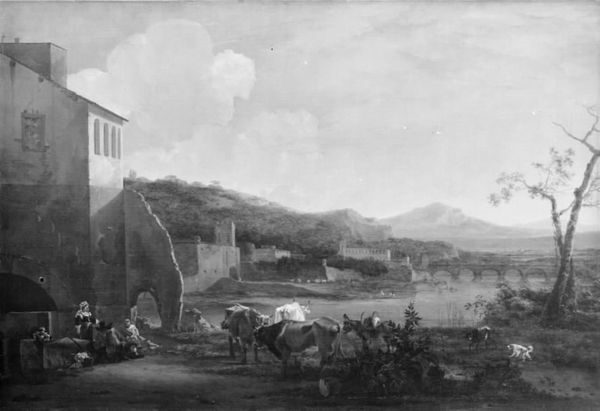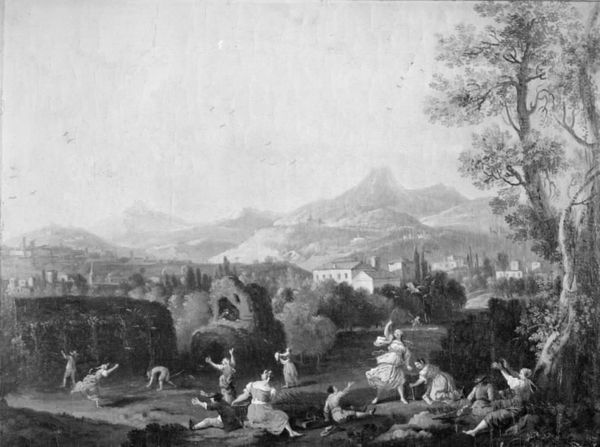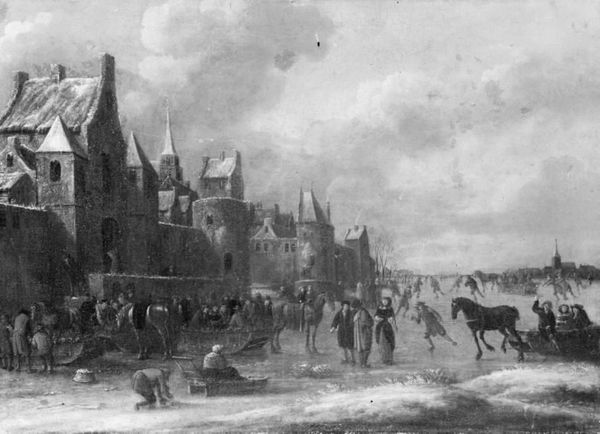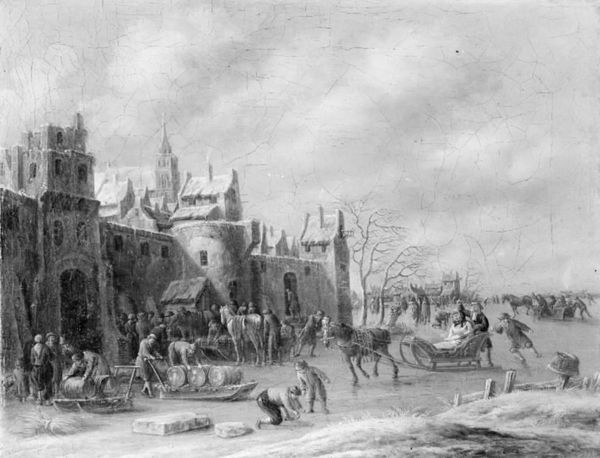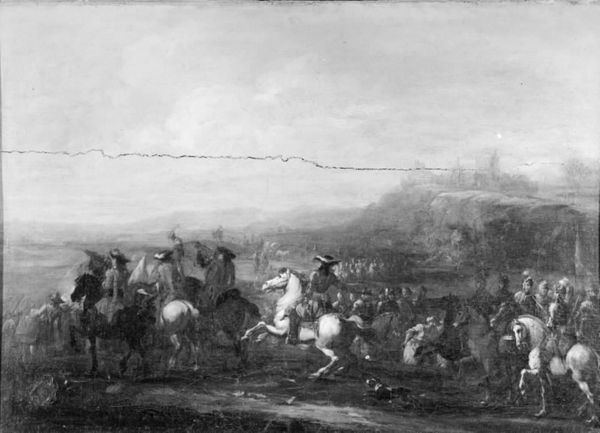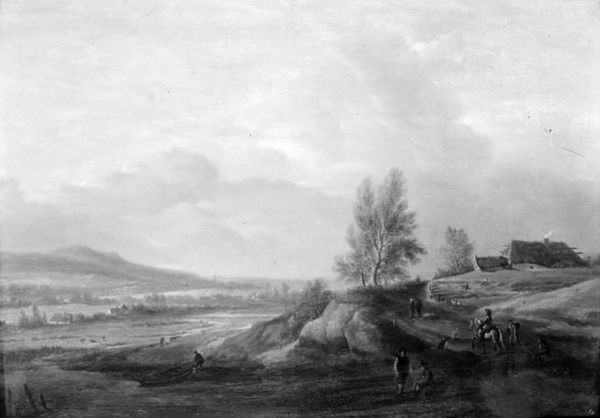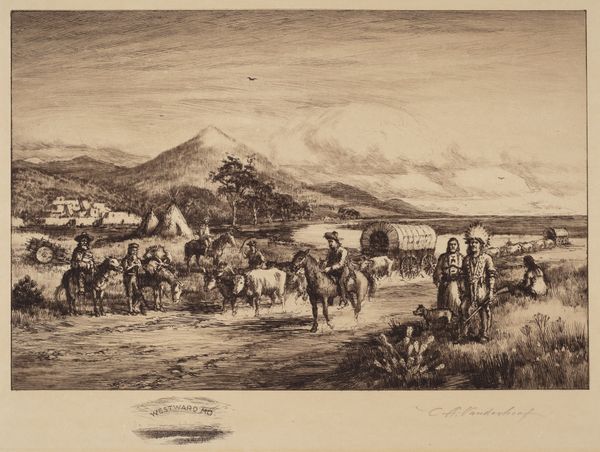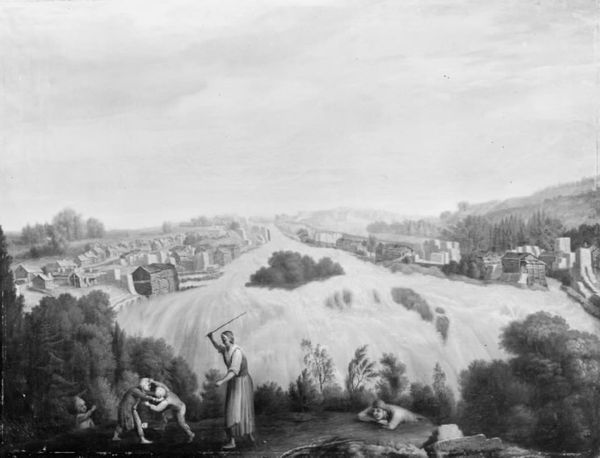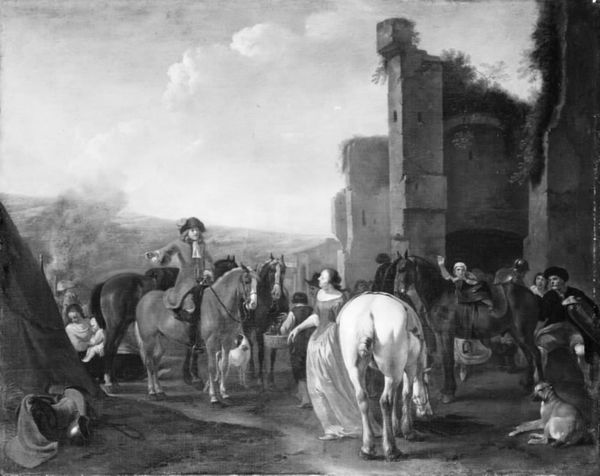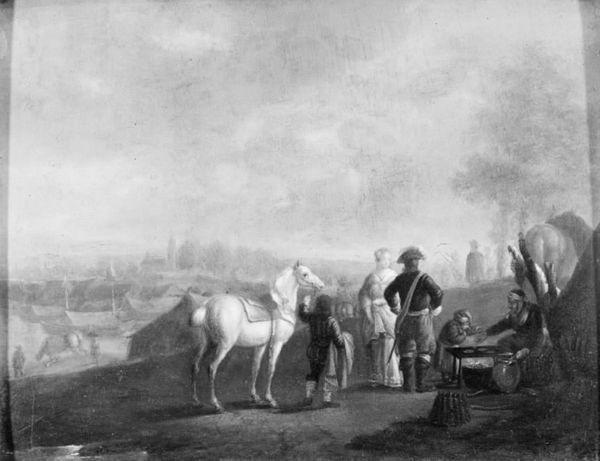
drawing, ink, pen
#
pencil drawn
#
drawing
#
baroque
#
dutch-golden-age
#
pencil sketch
#
landscape
#
study drawing
#
charcoal drawing
#
ink
#
pencil drawing
#
pen
#
cityscape
#
charcoal
#
graphite
Dimensions: 66 cm (height) x 115 cm (width) (Netto)
Editor: This is Gerrit Adriaensz Berckheyde's "View of Heidelberg," likely created between 1653 and 1698. It's a drawing using pen, ink, graphite, and charcoal. The composition seems very carefully arranged; almost like a stage set, with all these figures in the foreground leading our eye toward the castle in the distance. What do you see in this piece? Curator: Note how Berckheyde meticulously uses line to define form and space. The buildings and figures are delineated with a precision that speaks to a rigorous observation of visual data. How does the arrangement of these graphic marks structure your gaze? Editor: Well, the dark lines of the figures and animals in the front really pop, making me focus on them before I even notice the city. Curator: Precisely. The use of line weights, where darker, heavier lines come forward, effectively dictates a recession into depth, constructing a very calculated sense of perspective. What relationship can we observe between line, light, and form? Editor: I think the areas with the least lines seem brightest, and they feel the farthest away, like the sky sort of fades. The lines get darker and more concentrated towards the bottom. Curator: The contrast contributes to the hierarchical arrangement of the visual elements. Notice how the textures implied through varying strokes shape not only surfaces but the entire composition. Everything from the rough-hewn surfaces to the billowing sky seems controlled by mark-making. Editor: So it’s less about Heidelberg and more about how it’s depicted? Curator: Precisely. Berckheyde exploits drawing to make the viewer consider how they are persuaded to interpret pictorial space. His genius lies not in literal reproduction, but skillful manipulation of lines to create an artful fiction. Editor: I hadn’t thought about it that way. Seeing how the lines create the depth makes me appreciate the artist's control so much more. Curator: Indeed. It exemplifies the power that formal arrangement holds over perception, shaping not just what we see, but how we see.
Comments
No comments
Be the first to comment and join the conversation on the ultimate creative platform.
